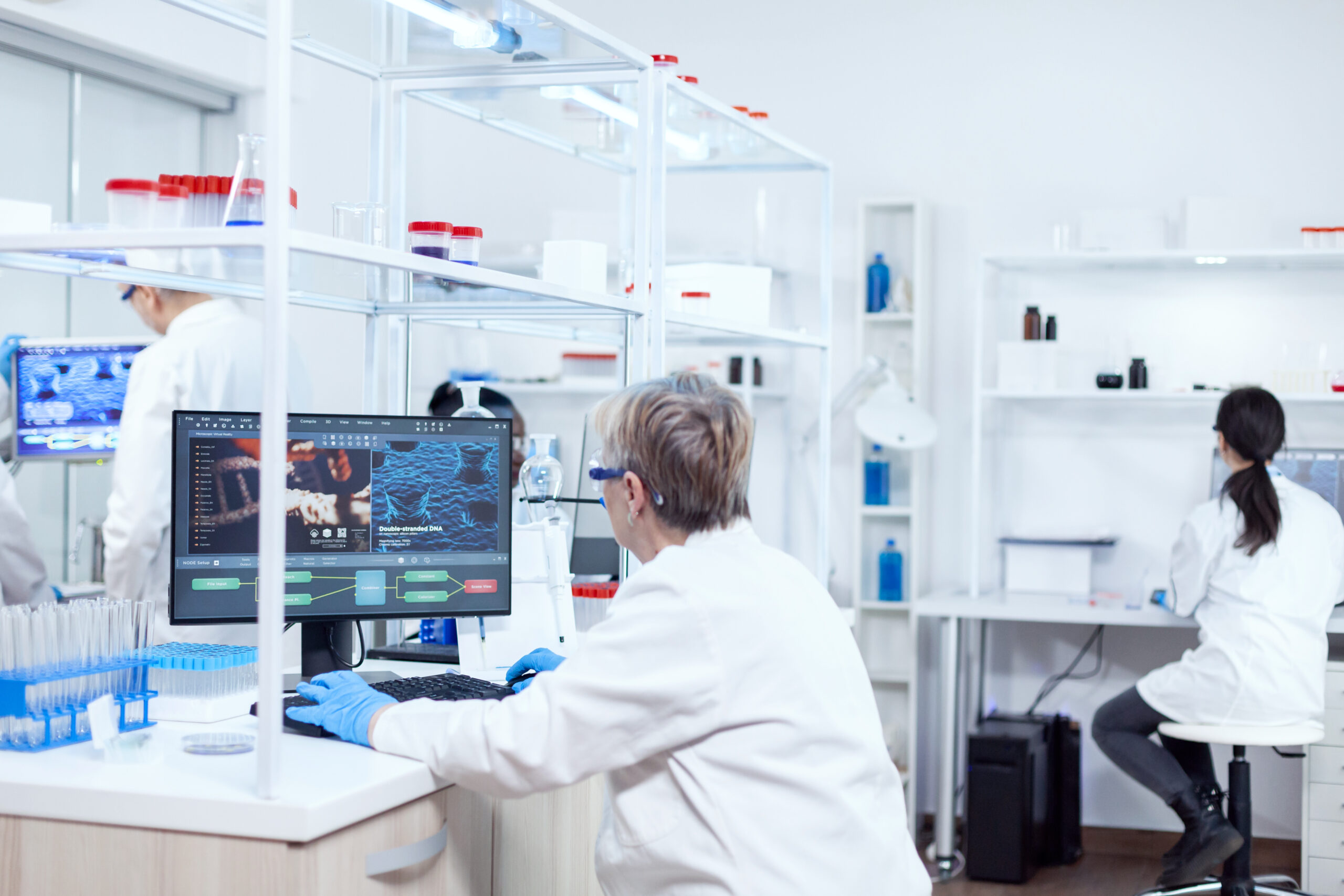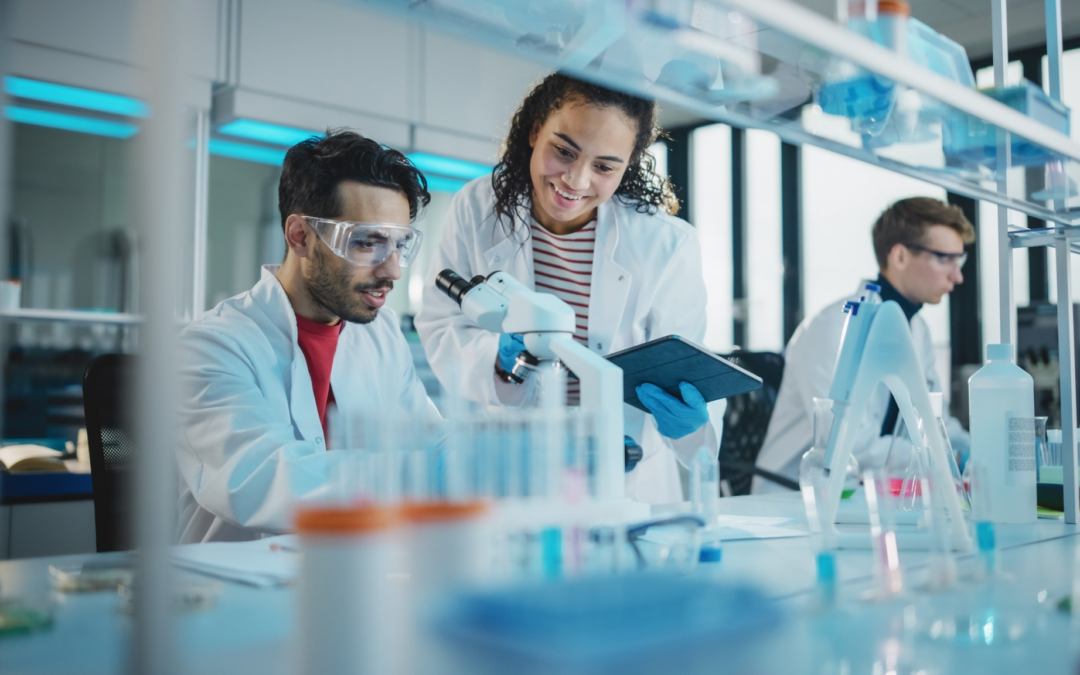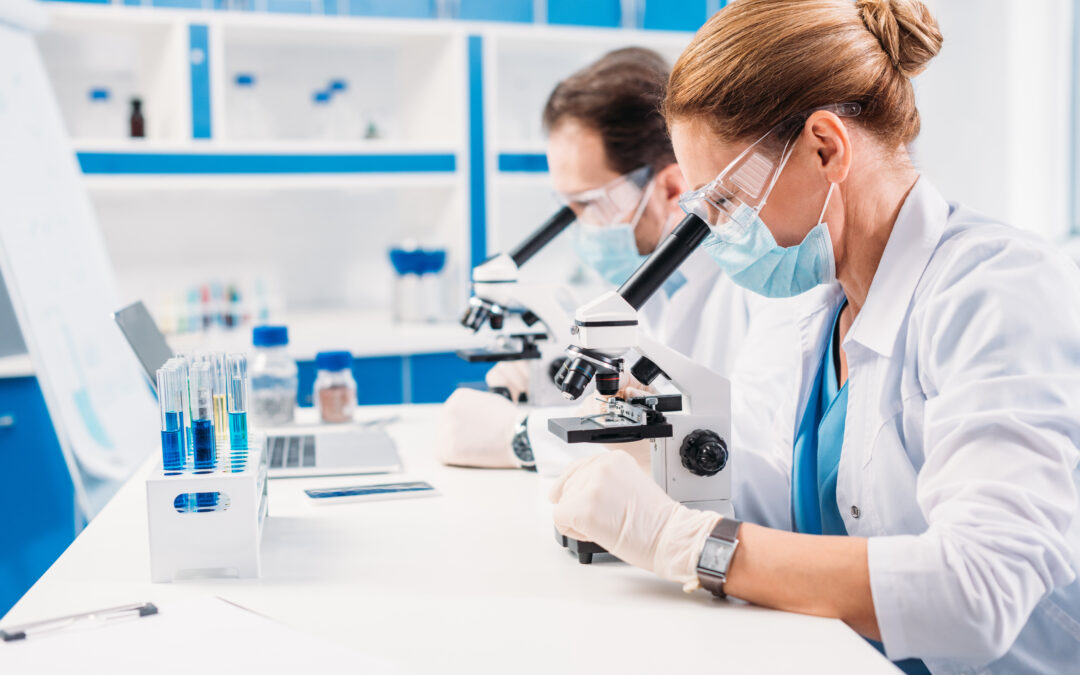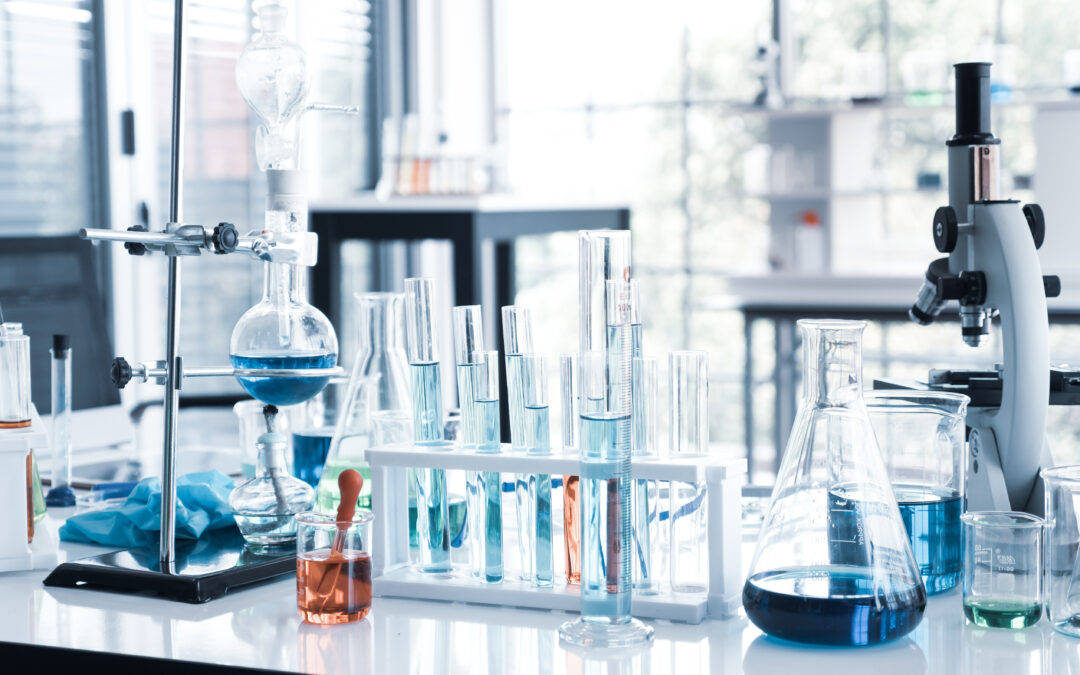
Setting up an in-house lab can revolutionize how urgent care centers deliver care. Considering how many stat tests an urgent care center needs to order, the rapid advances in molecular testing can more accurately provide results of pathogens with same-day results that enhance patient outcomes. Bringing a clinical lab in-house makes sense, especially when you are capturing revenue that was once outsourced to another lab. The challenge is understanding all the steps required for a successful in house lab setup while continuing to run your busy center. With Cadence Lab Services, you don’t have to start from scratch. We’ll provide a turn-key lab solution and guide you through every stage of the process, starting with this comprehensive guide.
Ways a Molecular Testing Laboratory Business urgent careves urgent care centers an Edge
Operating a molecular diagnostics laboratory allows urgent care practices to offer rapid and precise identification of pathogens, minimizing delays associated with traditional tests. This speed improves treatment accuracy and supports timely clinical decisions, which enhances both workflow and patient trust.
With quicker diagnosis, physicians can select more effective treatments while closely tracking antibiotic resistance patterns. Practices also benefit from additional income through the direct provision of advanced lab services. Control over urgent testing needs further distinguishes a practice, making care more responsive and reliable for patients.
The Impact of Onsite Lab Testing for urgent care centers
Having an onsite lab allows an urgent care center to oversee the entire diagnostic process directly. This typically results in reduced turnaround times, more dependable results, and the ability to make prompt clinical decisions.
Key Benefits:
- Quicker results for patients
- Enhanced care personalization
- Increased patient satisfaction
- Financial Advantages:
|
Benefit |
Impact |
|
Reduced outside lab expenses |
Cost savings |
|
Direct reimbursement capture |
Increased revenue |
|
Streamlined operations |
Improved efficiency |
Phase 1: Specialist Advisors for Starting a urgent care Laboratory
Selecting Diagnostic Panels for urgent care
A tailored approach to choosing diagnostic tests is crucial for any urgent care lab initiative. Evaluating current diagnostic trends and patient flow helps determine which assays provide the most clinical and operational benefit. Nascent urgent care labs should focus on versatile molecular tests that detect key pathogens, inflammation, and cancer risk markers, with recent advances in PCR technology.
High-yield molecular panels can detect numerous pathogens in one test and often include resistance gene profiling, supporting effective antimicrobial stewardship. These tests provide swift results, sometimes on the same day, streamlining patient care. Customizing the testing menu according to the unique population and workflows results in higher clinical impact and improved lab efficiency.
Selecting these molecular assays ensures the urgent care center can quickly address a broad spectrum of clinical needs while maintaining efficient operations.
Maintaining a portfolio of essential pathology and staining procedures ensures urgent care labs meet the urgent needs of patients while also boosting revenue. The comprehensive approach to test selection, informed by expert guidance, provides the foundation for effective lab business development.
Phase 2: Financial Planning for Your urgent care Clinical Laboratory
Effective financial planning for an urgent care clinical laboratory requires accurate projections and transparent evaluation. A comprehensive financial assessment uses real test volumes and billing figures to estimate costs and anticipated revenue for the lab.
Key steps include:
- Collecting data on expected test usage and reimbursement rates
- Reviewing projected expenses, including startup and ongoing operations
- Analyzing anticipated revenue streams based on real practice data
- Identifying the pathogen panels that work for the practice
A trial analysis period provides a factual estimate of return on investment (ROI), helping stakeholders make sound, informed choices before fully launching the laboratory.
Phase 3: Organizing Your urgent care Lab and Fulfilling Compliance Requirements
Establishing a urgent care laboratory involves following multiple layers of regulation and accreditation. Labs must secure the appropriate certifications and adhere to local, state, and federal guidelines. Key requirements include suitable facility layout, reliable equipment installation, and documented maintenance procedures to ensure a safe environment.
Staff qualifications are a primary focus. Every team member must meet educational standards and complete safety training, which includes understanding OSHA rules and privacy laws such as HIPAA. Maintaining updated personnel files and training logs is essential for inspections.
A well-run lab requires strict quality systems. This covers routine quality control checks, ongoing performance assessments, and thorough records of all testing and equipment. Labs need structured processes for documenting, verifying, and reporting lab results—helping meet regulatory benchmarks and ensuring reliable diagnostics.
|
Accreditation |
Purpose |
|
CLIA |
Federal certification for all clinical labs |
|
COLA |
Accreditation for office-based labs |
|
CAP |
Quality benchmark for high-volume labs |
Proper preparation and proactive compliance help create a foundation for dependable patient care and smooth laboratory operations.
Phase 4: urgent care Lab Planning, Equipment, and Operational Flow
Designing the Lab Space
Proper lab setup starts with a carefully crafted layout. Dedicated zones for sample collection, specimen processing, storage, and administration support streamlined movement and minimize cross-contamination. All layouts should meet current safety standards and regulatory guidelines.
Selecting and Setting Up Equipment
Essential equipment—including molecular testing instruments, centrifuges, temperature-controlled storage, and biosafety enclosures—should be sourced according to the specific requirements of gastrointestinal testing. Installation and calibration must be performed by certified professionals to guarantee compliance and optimal performance.
Streamlining Business Operations and Lab Procedures
A clear process for sample handling, labeling, and documentation helps maintain accuracy. Connecting the Laboratory Information System (LIS) to the electronic medical record (EMR) improves the flow of results to healthcare providers.
Ongoing monitoring, support, and regular process reviews help labs continue to adapt and improve as business needs change.
Phase 5: Assembling the Team for Your urgent care Lab
Hiring and Welcoming New Staff
Effective staffing begins by pinpointing and recruiting essential roles such as Lab Directors, Clinical Technolourgent carests, Technicians, and administrative support. Each candidate’s certifications and qualifications are thoroughly verified. The onboarding process includes a thorough orientation to ensure all personnel understand lab-specific procedures, safety protocols, and reporting structures.
Key roles to recruit:
- Lab Director
- Medical Technolourgent carest
- Lab Technician
- Support Staff
Staff Development and Skill Evaluation
Staff training is tailored to the unique needs of an urgent care clinical laboratory. New hires participate in sessions covering molecular diagnostics, specimen management, daily lab operations, and laboratory information system (LIS) navigation. Regular competency checks and refresher courses are scheduled to maintain high standards and keep skillsets current.
Areas of focus:
- Safe specimen processing
- Quality assurance practices
- Turnaround time improvement
- Digital record keeping and LIS use
Preparing for Inspections and Staff Support
Mock audits and documentation reviews are organized to ready the team for regulatory inspections. Staff receive clear checklists and guidance on maintaining compliance. Ongoing support is provided through continuous education programs and quick access to expert help, allowing the lab to stay compliant and prepared for future audits.
|
Preparation Area |
Methods Used |
Frequency |
|
Audit Readiness |
Mock Inspections |
Bi-annually |
|
Documentation |
Review Sessions |
Quarterly |
|
Education |
Training Workshops |
Continuous |
FAQ: How to Set-up an In-house Lab
What steps should you take first when launching a lab business?
The initial phase involves selecting a target patient group and area of focus, such as urgent care. Developing a comprehensive business plan and researching local, state, and federal regulations is key. Consulting with professionals experienced in lab start-ups can clarify the process and help avoid common missteps.
What licensing and certification do lab businesses need?
Labs in the U.S. generally need Clinical Laboratory Improvement Amendments (CLIA) certification. Additional state-specific licenses, as well as accreditations from organizations like COLA or CAP, may be necessary depending on the test menu and location. Below is a summary table:
|
Requirement |
Applies to Most Labs |
May Be State-Specific |
Common Accrediting Bodies |
|
CLIA Certification |
Yes |
No |
N/A |
|
State Laboratory License |
No |
Yes |
State Health Departments |
|
Voluntary Accreditation |
No |
No |
COLA, CAP |
What is the typical timeline for establishing a lab business?
Setting up a lab typically takes three to four months. This timeframe depends on planning, site preparation, equipment procurement, obtaining licensure, and hiring trained personnel. Regulatory reviews and inspections also affect the overall schedule.
What challenges are most likely to arise during the lab start-up?
Key obstacles include:
- Meeting regulatory standards
- Recruiting skilled lab staff
- Choosing and validating equipment
- Maintaining ongoing quality compliance
Lab consultants and advisors can provide valuable assistance to address these difficulties.
Is it possible to outsource parts of starting up a lab?
Certain aspects of establishing a lab can be outsourced. Many companies offer end-to-end solutions, including regulatory approvals, equipment sourcing, facility layout, and training for staff. Delegating these tasks can save significant time and improve efficiency.
How can a lab business improve profitability?
Profitability is driven by practical financial planning, offering tests in demand, refining operational workflows, and maximizing insurance reimbursements. Conducting a pre-launch financial review using actual or projected patient data can help assess expected returns.
Where can you find support for starting a urgent care laboratory?
A number of laboratory consulting organizations specialize in launching urgent care labs. These firms assist with regulatory planning, workflow optimization, equipment selection, and staff training, providing direct support through each step of the process.
What Are the Main Needs for Launching an In-House Laboratory?
Launching an in-house laboratory requires attention to infrastructure, equipment, staff qualifications, and regulatory compliance. Proper ventilation, clean water supply, and secure storage for chemicals are key. Sufficient space must be dedicated for work areas, safety stations, and waste disposal.
Step-by-Step Checklist for Setting Up a Private Lab
- Assess space and facility readiness
- Identify and purchase required instruments
- Set up safety equipment (eyewash stations, fire extinguishers, fume hoods)
- Hire and train qualified personnel
- Obtain necessary licenses and certifications
- Establish protocols for waste disposal and quality control
Where to Find a Detailed PDF Guide for In-House Laboratory Setup
Comprehensive guides in PDF format are available through professional organizations, laboratory supply companies, and regulatory agencies. Key sources include the websites of the Centers for Disease Control and Prevention, Clinical and Laboratory Standards Institute, and major medical associations. Searching terms like “in-house laboratory setup guide PDF” can help locate these documents.
Approaches for Calculating the Startup and Operating Costs of a Private Lab
Startup and maintenance costs depend on lab size, test types, staffing, and equipment. A simple method is to create a budget that covers:
|
Category |
Examples |
|
Equipment |
Analyzers, centrifuges, pipettes |
|
Facility |
Rent, utilities, furnishings |
|
Personnel |
Wages, training, certifications |
|
Supplies |
Reagents, consumables, PPE |
|
Compliance |
Licenses, inspections, insurance |
|
Maintenance |
Equipment servicing, software updates |
Periodic cost reviews help adjust the budget as operational needs change.
Sequence of Actions for Starting a Laboratory Testing Business
- Conduct market research for required testing services
- Develop a business plan and secure funding
- Choose a suitable location and design the lab layout
- Obtain certifications and legal registrations
- Install equipment and IT support systems
- Hire experienced staff and implement standardized procedures
- Create partnerships with suppliers and clients
Can a Fully Equipped Lab Be Set Up at Home, and What Are the Legal Concerns?
Setting up a fully equipped laboratory at home is often restricted by local laws, zoning regulations, and health codes. Some basic research or hobby labs can be arranged with a focus on nonhazardous activities, but using chemicals or processes classified as hazardous is typically prohibited in residential settings. It is essential to check with local authorities and follow all legal and safety requirements.
Find Out How Much Your Current Lab Work is Worth
Cadence Lab Services will help you calculate your current labwork for 2 months to show you the potential margins on bringing a lab-house. Our turnkey solutions take all the guess work out of your investment and empower you to provide the highest quality and fastest care to your patients.
Read Next

Dr. Kia Michel
Urologist and Lab Management Expert
Kia Michel MD is co-founder of Cadence Lab Services. A renowned urologist, he opened his own in-house lab when he realized that he could improve patient outcomes in his urology practice, Comprehensive Urology in Beverly Hills, by having the power of fast test results. He shares his knowledge of the lab industry to empower other clinicians to take control of their own lab work.

How Much Does it Cost to Run a Laboratory?
Establishing a medical laboratory involves a range of important considerations, each playing a critical role in building a strong, compliant, and reliable operation. From selecting an appropriate...

Start Your Own Lab with Cadence Lab Services: Step by Step
How do you start your own lab to improve your ability to get fast results for your patients? Medical laboratories play a critical role within healthcare, providing analytical and diagnostic services...

Clinical Laboratory Profitability: Top Ways to Increase Your Lab’s Revenue in 2025
Clinical laboratories are facing increased demands each year, from boosting test volumes and reducing turnaround times to controlling costs, all while managing with fewer resources and a shrinking...
